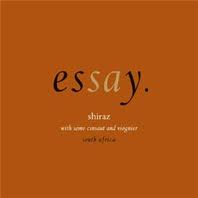To celebrate a significant birthday this year, my friend Georgia is going on a trip to South Africa.
“For the wine?” I asked when she told me about her travel plans.
She stared at me. “Wine? No, I’m going for the wild animals and beautiful scenery. They have wine in South Africa?”
Not only does this brief dialogue illustrate how narrowly wine-centric my own view of the world is, it also suggests that South Africa’s wines are not as widely known as they deserve to be.  Although she’s a relatively sophisticated wine drinker, Georgia’s lack of knowledge about the wines of South Africa is hardly unique.
Although she’s a relatively sophisticated wine drinker, Georgia’s lack of knowledge about the wines of South Africa is hardly unique.
Yes, they do have wine in South Africa, and if you aren’t already familiar with it, you’re missing out on one of the world’s most fascinating wine regions. South Africa, it is regularly counted among the top ten wine producing countries in the world, and it is hardly a newcomer to the wine business. Wine has been made here since the 1600s, although the earliest European settlers, who hailed from Holland, had little tradition of viticulture and winemaking. But with the arrival of the French Huguenots around 1680 the emerging wine industry gained momentum in both quantity and quality.
It has been far from a smooth journey across the centuries, with the worst bump in the road occurring during the political and social upheavals between 1948 and 1994, when South Africa’s wines virtually disappeared from the worldview. Then, with the end of apartheid in 1994 the forward thrust accelerated. Today, wines from South Africa, once considered generally coarse and rustic, routinely garner praise from critics across the globe. Of course there is always room for improvement, but isn’t that pretty much the case everywhere?
The heart and soul of the country’s wine growing is around Cape Town. Among the nation’s  wine districts are Paarl, Costantia, Western Cape, Walker Bay, Elgin, Oliphant, and Orange Rivers. Stellenbosch, located about 30 miles east of Cape Town, is perhaps the best-known South African wine region, and it also boasts the country’s oldest wine trail, founded in 1971. A lovely tree-shaded town, Stellenbosch is noted for its fine examples of Cape Dutch architecture as well as for its wines. Red wines dominate the Stellenbosch repertoire, especially Cabernet Sauvignon, Merlot, Shiraz and Pinotage. The best white wines from the region include Chenin Blanc, Chardonnay and Sauvignon Blanc.
wine districts are Paarl, Costantia, Western Cape, Walker Bay, Elgin, Oliphant, and Orange Rivers. Stellenbosch, located about 30 miles east of Cape Town, is perhaps the best-known South African wine region, and it also boasts the country’s oldest wine trail, founded in 1971. A lovely tree-shaded town, Stellenbosch is noted for its fine examples of Cape Dutch architecture as well as for its wines. Red wines dominate the Stellenbosch repertoire, especially Cabernet Sauvignon, Merlot, Shiraz and Pinotage. The best white wines from the region include Chenin Blanc, Chardonnay and Sauvignon Blanc.
For wine lovers who haven’t delved into the diversity of South African wines, here are a few suggestions to begin your exploration. But these are merely suggestions, and I urge you to strike out on your own discoveries.
MAN VINTNERS Chenin Blanc, Coastal Region, 2011, $10, Imported by Vineyard Brands: With sweet, ripe melon and tropical fruit flavors backed by a refreshing tang of acidity, this is a perfect aperitif wine or a companion to simple seafood or poultry dishes.
HELDERBERG WIJNMAKERIJ Merlot, Stellenbosch, South Africa, 2009, $13, imported by Vineyard Brands: With juicy red fruit characteristics, and a specific kind of earthy character I’ve come to associate with many South African reds, this is an unusually sophisticated wine for the price. It’s well balanced, straightforward and moderate in all its aspects, including tannins, acidity, and sweetness.
ESSAY Shiraz, South Africa, 2009, $11, Imported by International Wine Imports: Another  attractively priced red, this blend of Shiraz, Cinsaut, Mourvèdre and Viognier is soft and sensuous, with distinct notes of sweet cherries held in savory balance by a swoosh of acid on the finish.
attractively priced red, this blend of Shiraz, Cinsaut, Mourvèdre and Viognier is soft and sensuous, with distinct notes of sweet cherries held in savory balance by a swoosh of acid on the finish.
SOUTHERN RIGHT Pinotage, Hemel-en-Aarde Valley, South Africa, 2009, $27, imported by Vineyard Brands: A medium-light bodied wine with complex fruit flavors highlighted by earthineness and flashes of minerality. Pinotage, a crossing of Pinot Noir and Cinsault, is a favored South African wine grape. It may be somewhat of an acquired taste, but Southern Right’s version is a mellow and splendid example of the genre.
7
